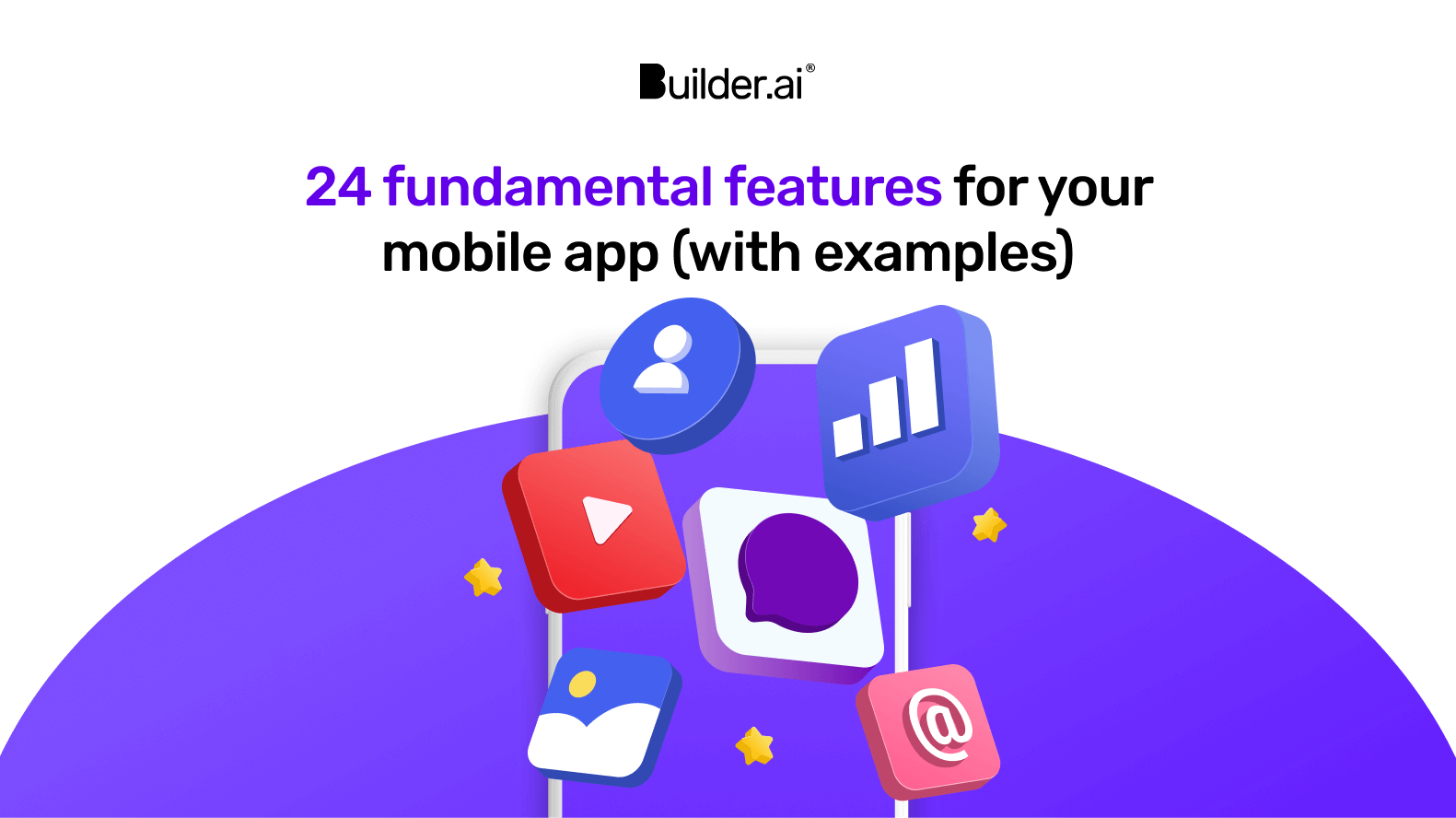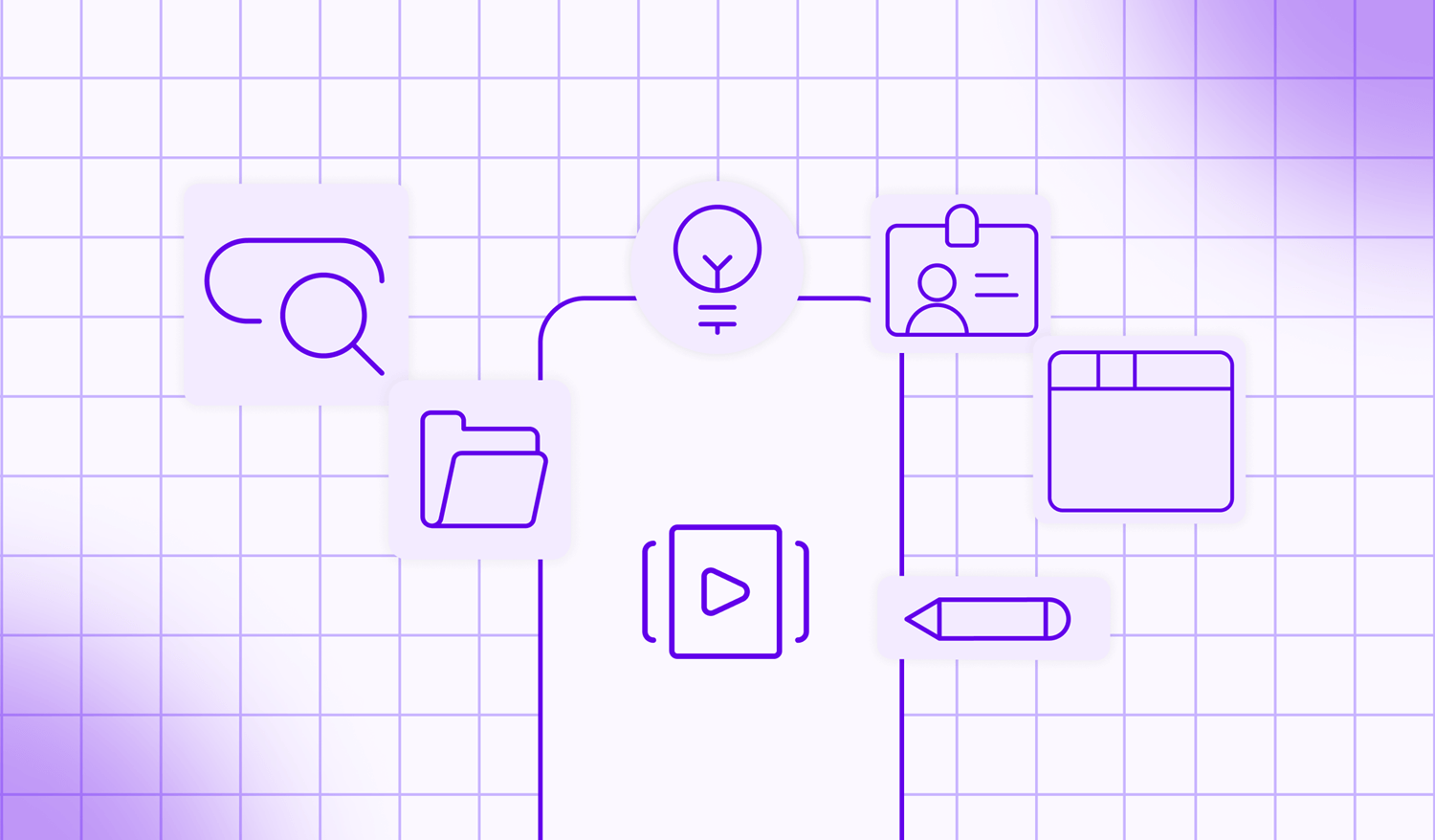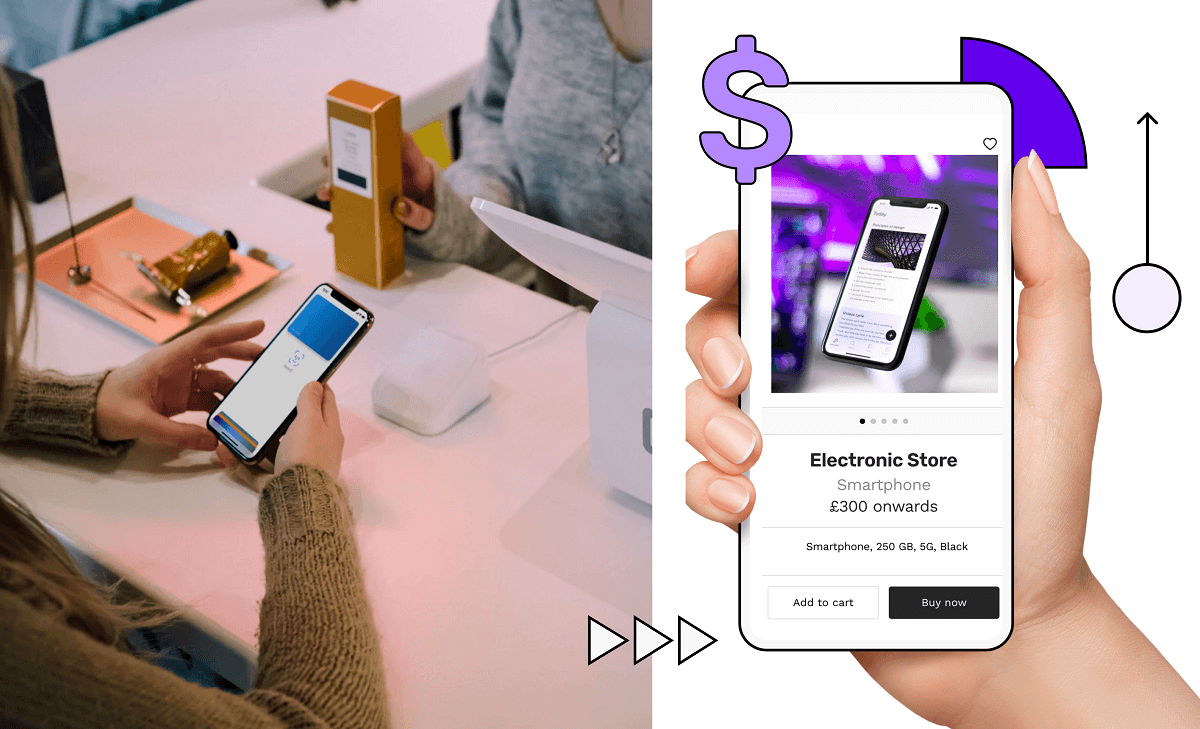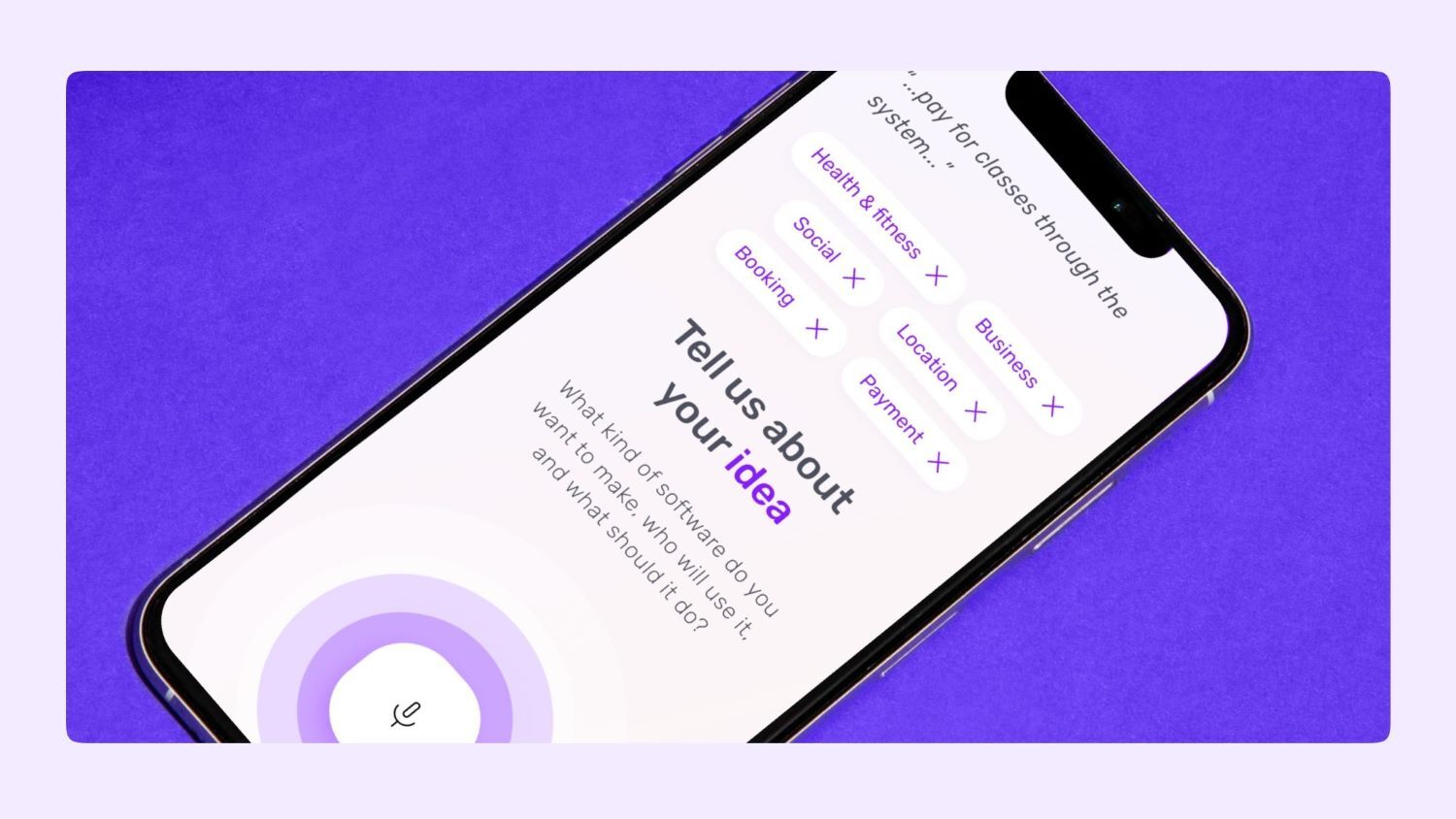Whereas 10 years ago, creating a website would be the first port of call for businesses, building apps is becoming increasingly popular.
This is largely due to the realisation that people spend 90% of their time on their mobile phones in apps.
However, not all apps are created equal. While some quickly rise to the top of the charts, seeing millions of downloads, others even struggle to gain traction. Almost 56% of apps get uninstalled in the first seven days.
So, what is it that sets successful apps apart from the rest? What are the key features that you need to have in your app that your target audience expects?
In this article, we’ll talk about the must-have features your app needs to have and some industry specific features to make your app stand out from the crowd.
Let’s dive in 👇
Must-have features
Other than an intuitive user interface and beautiful app design, there are some must-have features you should incorporate into your app.
1 - Login
As basic as it sounds, every app must have a login feature.
Firstly, it enables your users to keep their accounts safe. The login feature keeps user data secure and ensures that the right users log in.
Secondly, logging in allows you to tailor user experiences. For example, you can tweak things like content, recommendations and settings based on customer preferences.
Lastly, the login features gives you access to user data, meaning you can track their behaviour and gather insights to improve your app over time.
2 - Push notifications
Have you ever received a notification while scrolling through your social media feed before suddenly realising you’re buying something?
This is how push notifications work, bringing you back to the app where you left off.
Push notifications enable you, as a business owner, to send messages to your users, enticing them to return to your app with discount codes, promotions or rewards. This feature should be at the top of your list when it comes to adding features to your app.
These little messages have become one of the biggest user engagement strategies for any app. Well-timed and personalised push notifications can see up to 90% open rates and up to 54% conversion rates.
You can also use them in several ways. For instance, if you’re running a food ordering app, you could send relevant notifications to a user with a discount on their favourite food items.
And if you’re running an e-learning app, you could remind users to complete their courses and notify them when their learning streaks are in danger.
One thing to remember while leveraging push notifications is that they should be used with care, otherwise, your users might turn them off. If used correctly, push notifications can deliver value to customers and revenue to your business.
3 - App analytics
Analytics dashboards provide a birds-eye view of your app’s sales and operations. Whereas, without it, you fly blind.
Imagine you run a hotel booking app. Using app analytics, you know which destinations are popular in which season or which hotels are the most popular. You can decide to feature them more prominently in your app during particular seasons.
With analytics, you get a clear picture of what’s happening in your app. Plus, with access to these kinds of user and business insights, you can make smart, data-driven decisions that help your app scale.
For example, in an ecommerce app, you can track which products are flying off shelves, which geographies aren’t performing as intended and which products you can provide discounts on.
You can also plan new marketing campaigns and track their impact on your sales while tracking important app metrics like:
- Conversions
- Revenue
- Customer acquisition cost (CAC)
- Average order value (AOV)
- Cart abandonment rate
Ecommerce apps
If you’re building an ecommerce app, you should focus on providing a seamless shopping environment and prioritise features that make purchasing simple.
4 - Advanced search and filter

Almost all apps provide their customers with an advanced search feature. Why?
Because 69% of users go directly to the search bar.
Let's use an example to illustrate this.
Say you sell watches online and your customer is looking for something specific. Their requirements are for it to:
- Be gold plated
- Have a 45mm case size
- Cost up to $300
Instead of asking these customers to find a needle in a haystack, your app should have the functionality to provide them with relevant options that match their intent.
Search navigation bars simply allow app users to type in what they want and filters help them narrow down their choices based on price, colour, size, delivery options and more.
Ultimately, search and filter options are like personal store guides that assist your customers in finding their perfect item as quickly as possible and provide a frictionless online shopping experience on your app.
5 - Multiple payment options
Losing a paying customer because of your app’s inability to process payments is gut wrenching.
Time is of the essence once your customer decides to buy from your app. At that moment, the best way to increase conversions is to reduce these friction points. To do this, you need to give your customers the option to:
- Pay instantly with Apple Pay, Google Pay, PayPal or mobile wallets
- Pay with both debit cards and credit cards
- Pay cash on delivery
Taking these steps will not only increase your revenue by up to 30%, but it'll also encourage users to return to your store, as they can complete their purchases without any hiccups.
6 - Product ratings and reviews
Did you know that 93% of customers say that online customer reviews have made an impact on their purchasing decisions?
What’s even more striking is that products with 4-star ratings get 11.6 times more orders than those with 3-star ratings.
As customers don’t get the ability to touch or feel your products online, they rely on social proof to validate their purchase decisions.
This is why encouraging your users to post their ratings and reviews is so essential.
To ensure they have maximum impact, display reviews where customers can see them.
Although this might sound daunting, the impact of any negative reviews will be mitigated by your response to them, helping you build your brand.
7 - One-click checkout
No shopper wants to go through the process of filling in personal and payment details twice, especially if they’re regulars on a platform. One-click checkout streamlines the checkout process by making your user’s life easier, resulting in an enjoyable shopping experience.
After all, cumbersome checkout processes can prevent customers from completing their purchases. One-click checkout, on the other hand, increases the conversion rate by up to 30% when compared with multi-step checkout processes.
Walmart provides its users with a one-click ordering option where they can quickly purchase items without going through a lengthy checkout process.
8 - Order tracking
Order tracking provides transparency to your customers at all stages of their ordering journey – be it order confirmation, packing, dispatch, out for delivery and, finally, delivered.
This is a must-have ecommerce app feature because 90% of customers want the ability to track orders.
A bonus benefit of this functionality is that it frees up your customer service teams from manually providing updates to customers, helping them focus on more strategic tasks.
Flipkart and thousands of other ecommerce businesses allow users to track their orders at each step of the delivery process.
9 - Smart reorder
The smart reorder feature has the potential to be one of the most valuable features of your app.
Why?
Because it can help you secure repeat business and generate recurring revenue.
If your online store sells fast-moving products that users need after a certain period of time, then you need to invest in this feature. Essentially, it’s a shortcut to the products your users buy regularly, meaning they don’t need to browse to find them.
This feature learns the buying patterns of users and tailors recommendations based on their preferences, making shopping on your app extremely convenient.
You can further sweeten the deal for returning customers by providing them with discounts and promotions exclusive to smart reorders, encouraging more users to use the feature.
Amazon provides a “Subscribe & Save” feature that allows customers to automatically reorder their frequently purchased items. According to a report, Amazon shoppers using the Subscribe & Save feature spend more than double the average Amazon Prime customer.
Finance apps
If you’re building a finance app, you should focus on features that empower your users to manage their finances seamlessly. Your ultimate goal should be to provide users with a reliable app that helps them achieve their financial goals.
10 - Bank account linking
It’s a no-brainer for a finance app to have a bank account linking feature. With this feature, your users can access their bank account information and manage their money—all within your app.
This feature not only saves your users from jumping between multiple apps, but also provides you with an opportunity to give personalised finance tips. For instance, by analysing their spending patterns, you can give them personalised recommendations or simply notify them of where they can save more on a daily basis.
However, while incorporating this feature into your app, you need to take robust security measures so users know they can trust you with their sensitive information.
The Paytm app allows users to connect multiple bank accounts and even transfer funds between them seamlessly.
11 - Dashboard
A dashboard in a finance app works as a command centre.
From account balances to investments, a it provides your users with a snapshot of their finances in an easy to easy-to-read. It’s a super handy feature that saves users time digging through a bunch of different screens.
Also, a dashboard works as a perfect welcome screen for your app. From there, your users can go deeper into the app and use other mobile app features like bill payments, credit monitoring, insurance, investments and more.
The Mint app provides a comprehensive dashboard where users can track their spending and create budgets to manage their finances.
12 - Credit monitoring
Although it’s not mandatory, credit monitoring is definitely a good feature to have. If you’ve ever taken a credit or even applied for it, you know the pain you have to go through.
Offering free credit monitoring can provide real peace of mind for your users and is worth keeping your app on their devices.
You can go even further to make this feature interactive. For instance, you can send alerts whenever there's a significant change in credit reports or provide customers with personalised tips on how they can improve their credit score over time.
Credit Karma offers users access to their credit scores and reports at no cost.
Health and fitness apps
Building a health and fitness app requires you to provide a platform that not only helps users achieve their fitness goals but also motivates them to adopt a healthier lifestyle. You should focus on features that make their wellness journey as seamless as possible.
13 - Integration with wearables
Now this one’s a must-have feature for any health and fitness app. Why?
Almost 26% of people have access to smartwatches in the US.
More people are buying wearable devices to track their health. Not having this feature can be a deal breaker for many.
By integrating your app with a wearable device, your app can track users’ steps, monitor their heart rate and even analyse their sleep patterns.
With this feature, your provides a comprehensive picture of a user’s health and fitness journey and motivates them by tracking the progress they make.
The Nike Run Club app integrates with all kinds of smartwatches from Apple, Samsung, Fitbit and others.
14 - Online coaching

This could be a game-changing feature for your app, as it provides you with the opportunity to earn money.
People who don’t want to buy expensive gym memberships or spend time in public places are looking for online coaching so that they can do it from the comfort of their homes.
As of 2024, the health and wellness coaching market worldwide is valued at $17.3 Bn and is expected to touch $25 Bn by 2028.
In your app, you can provide live sessions or upload personalised workouts. You can also give your users the option to connect with other users so that they can motivate and cheer for each other.
Fitbit Coach offers personalised online coaching and guidance from certified trainers to help users reach their fitness goals.
15 - Nutrition tracking with image recognition

Anyone who’s trying to build muscles or lose weight needs to have a clear picture of what they put into their bodies. Plus, with image recognition, your users can skip the manual logging in and track effortlessly by simply uploading a picture.
Nutrition tracking allows your users to make better dietary decisions and see real results faster—which is the real goal of building a fitness app in the first place.
MyFitnessPal allows users to track their diet with its image recognition feature. Users can simply take pictures of their food and the app will analyse them to log the calories consumed.
Want to start your app project with us?
Book a demoSpeak with one of our product experts today.
By proceeding you agree to Builder.ai’s privacy policy and terms and conditions

Travel apps
Today, travel apps have made vacation planning a breeze, with modern travellers relying on them for every aspect of their travels. Other than enabling flight booking and providing weather updates, your travel app should have these must-have features to be successful. 👇
16 - Personalised itinerary planning
Nobody wants to miss out on the cool spots to visit or skip the awesome activities while visiting a destination, only to regret it later.
With a personalised itinerary planning feature, your app can create a trip plan tailored to your user’s interests, be it hiking, sightseeing or eating at the finest places.
This feature helps your users make the most out of their time away, as it suggests the best places, routes, transportation options and even timing for activities.
Sygic Travel allows users to create customised itineraries based on their interests and travel dates. Users can select attractions and activities they’re interested in and the app provides a customised route.
17 - Offline access
The last thing your app users want is to be trapped in a foreign land with no internet access, only to see their favourite travel app die on them.
Offline access to a travel app is not a convenience but a requirement. Your travel should enable your users to save maps, guides, itineraries, passport details, flight tickets, hotel bookings and other relevant information.
Offline access to your app also helps your users save on data costs, as roaming charges can be pretty expensive. Plus, it reduces battery drain, which is crucial while travelling.
TripAdvisor is a popular app that provides offline access to itineraries, guides and tickets to help users organise their trips better.
18 - Currency converter
Including a currency converter feature in your app helps you to give your users everything they need in one place, saving them from fiddling with other apps.
Using this feature, your users get accurate exchange rates, meaning they can get the best deal when they get their currency.
The TripIt app provides TripIt Pro, a paid subscription that provides currency exchange rates and many other international travel tools.
Education apps
The global e-learning market is forecast to reach $400 Bn by 2026. If you’re creating an e-learning app, you’re tapping into a rapidly growing industry with immense potential for innovation.
Therefore, the features you should be looking for are those that prioritise interactivity while providing a personalised experience. 👇
19 - Progress tracking and reports

These are the personal scorecards that help your users keep tabs on their learning journey.
Using them, they can keep track of the subjects or topics they need to prepare for and monitor their progress over time.
These reports are helpful for your users and also help educators. They can understand how their students are doing and spot areas where they might need extra help to adjust their teaching accordingly.
Put simply, the progress reporting feature makes your users ace their exams, giving your app a reputation.
In the Khan Academy app, students can track their progress on dashboards, which show completed exercises, time spent on each topic and more.
20 - Live tutorials and sessions
Every student can log into YouTube only if they want more video content. Instead of pushing out more video tutorials, provide your students with live sessions where they can ask questions and get instant feedback—just like in a traditional classroom.
To make your virtual classroom more engaging, you can add features like chat and polls to your app and also enable the use of multimedia content.
For instance, Coursera, in addition to its pre-recorded lectures, conducts live sessions where students can participate.
21 - Gamified learning
Enough research has been done to prove that learning is more effective when it is active and fun. Gamified learning is one way to achieve that.
Gamified learning makes learning like playing a video game where your users earn points and badges when they level up in their learning.
What’s the best part of this feature? Your users will actually learn stuff without even realising it. This feature can increase your customer retention multifold, as they’re motivated to stick with it for longer.
For instance, in the Duolingo app, users can earn virtual currency for completing their lessons and challenges and can purchase items in the Duolingo Store using the currency.
Entertainment apps
In a world where average screen time is almost 7 hours a day, building an entertainment app could be the right move.
But truth be told, there’s no dearth of entertainment apps. If you want your entertainment app to stand tall amongst the competition, it should focus on providing personalised content and convenience to users.
22 - Multiple user profiles
Having multiple user profiles in your entertainment app is like having different TVs for every family member—no more arguing over what to watch.
Each family member can watch shows and movies at their own pace and in their own time. This means your users can watch their guilty pleasure daily soaps without being judged.
The multiple user profiles feature also enables parents to have control over their children's profiles where they can apply content filters and viewing limits.
Amazon Prime uses this feature to provide seamless viewing between profiles.
23 - Personalised content recommendation
Personalised content recommendations are a must-have feature for an entertainment app. This is because this feature makes the entertainment experience tailored, enabling your app to serve the options they’re sure to enjoy.
Personal content recommendations increase your app’s customer satisfaction, leading to increased customer loyalty and retention.
Today, almost 80% of content viewed on Netflix is through personalised recommendations alone.
24 - Offline viewing
The feature of offline viewing refers to the ability to download content from a streaming app so that users can watch it later without an active internet connection.
This means your users don’t need to worry about finding wi-fi or using their data to remain hooked to your app. Your users can simply download content from your app beforehand and binge watch whenever, wherever they are—be it on a plane, train, at work or simply while chilling at home.
YouTube and Spotify allow smartphone users to download content in the app so that they can enjoy their favourite videos and podcasts on the go.
Conclusion
While there are features that all apps must have, like login and push notifications, advanced, they vary across industries.
Whether it’s personalised recommendations for entertainment apps, offline access for travel apps or progress tracking for education apps, one thing is common among all apps—delivering an enhanced user experience.
If you want to build your dream app that delivers a seamless experience to its users, we’ve got you covered. At Builder.ai, we leverage the power of the world’s first AI product manager, Natasha, to recommend features based on your requirements.
Hit the banner below to book a chat with our team 👇
Want to start your app project with us?
Book a demoSpeak with one of our product experts today.
By proceeding you agree to Builder.ai’s privacy policy and terms and conditions

Laura McAllister is a seasoned Productologist at Builder.ai, specializing as a Product Owner. Her expertise lies in spearheading the successful launch of multiple apps and websites for growing businesses and startups. With a keen eye for detail and a knack for translating client visions into reality, Laura consistently delivers innovative solutions that drive tangible results.













 Facebook
Facebook X
X LinkedIn
LinkedIn YouTube
YouTube Instagram
Instagram RSS
RSS


